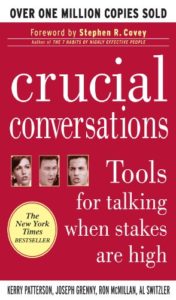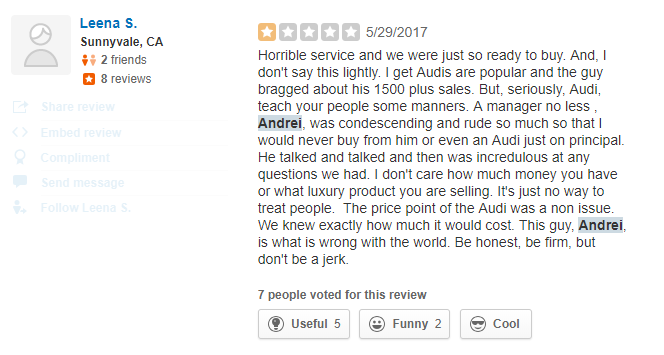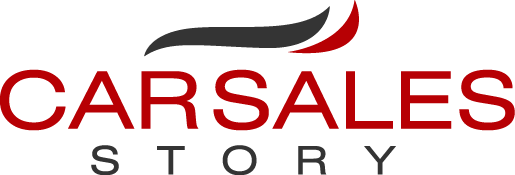Table of Contents
As you progress in your car sales career, you will begin to learn the common objections that every salesperson faces. In this article, we will be providing value for those people searching for “car sales tips overcoming objections” online. This subject is critical for success in sales!
Read the follow up to this popular article: Car Sales Tips Closing a Car Deal
and
Read the second follow up to this popular article here: Common Sales Objections and Rebuttals
Overcoming objections is a communication skill. It is in the same category as respect, listening, and clarity. Most of the time, the objections are not different opinions clashing, but rather a lack of shared knowledge.
If a customer thinks something is not possible, but it is, then you sharing the solution is a way of overcoming an objection.
The objection was getting in the way of the sale. That’s what objections do!
Many of my fellow salespeople have difficulty with overcoming objections that stems from a lack of process and problems handling stress. Stress is inherent to this sales, and I recommend you work to manage your stress by reading books on that topic.
I’ve read the top 10 results on google for the keywords “car sales tips overcoming objections.” I tried to figure out what made these pieces valuable and what I could do better.
My perspective on overcoming objections comes from successfully negotiating around 2000 car deals over the last six years. I’ve heard 100s of different objections, and all can be overcome at a high percentage.
Car Sales Tips Overcoming Objections
Objections come in two forms, placeholder objections, and reasonable objections. Customers use placeholder objections in place of their real objections. The reason they use placeholder objections can be because they are embarrassed, feeling uncomfortable, or they are trying to be strategic.
Here is an example:
Placeholder Objection (What A Customer Says):
“I think this deal sounds great, but I really should go grab some food. Feeling a bit hungry.”
Honest Objection (What A Customer Means):
“I’ve liked working with you, but I’m not sure if I am ready to pull the trigger. I want to slow down and think this over. Also, I’m hungry.”
Car Sales Tips Overcoming Objections – Placeholders
Placeholder objections are the stand-ins for the honest objection.
Handling a placeholder objection involves fostering mutual respect to open up a “safe space.” The “safe space” is the psychological area shared in a conversation between you and the customer. If you and a customer feel like that you can share objections freely, without the fear of disrespect, then you have created a “safe space.”

demilitarize your conversation
We are going to break this section into three parts, building up to the culmination of a conversational “safe space.” Once you have mastered these three steps, placeholder objections will tackle with ease. You will be a master of taking a placeholder objection and diving into it, revealing the valid objection below.
Overcoming Placeholder Objections: “Safe Space”
Perceptions, opinions, and experiences differ among all people. It is critical to have a “safe space” to have a conversation in which customers will reveal honest objections,
If a customer feels that their ego is threatened in any way, they will not be able to communicate honestly!
Here is my “safe space” equation:
Mental Preparedness -> Mutual Respect -> “Safe Space”
Once you have a safe space, you will be successful in uncovering the true objections that lurk below the placeholder objections.
Crucial Conversations
In the book “Crucial Conversations” (link is to the audiobook) the authors spend considerable time on the practice of creating a “pool of shared meaning” (I’ve shortened this to “Safe Space.”)

check out this book if you want to learn more!
When two or more of enter crucial conversations, by definition we don’t share the same pool. Our opinions differ. I believe one thing, you another. I have one history, you another.
People who are skilled at dialogue do their best to make it safe for everyone to add their meaning to the shared pool- even ideas that at first glance appear controversial, wrong, or at odds with their own beliefs. Now, obviously they don’t agree with every idea; they simply do their best to ensure that all ideas find their way into the open.
A “safe space” for dialogue is the goal. The key to creating a safe space is mutual respect.
A Conversation That Lacks “Ego Safety”
It’s OK to disagree, but the first time you act baffled by the other’s opinion you have taught them to no longer share. Here is an example of one of these conversations going poorly:
Customer: I’m interested in this car, but I want to buy it for $52k plus tax. I know you can do it, let’s get this done. Don’t waste my time… make this easy. I know you can do it.
Salesperson: $52K!? *chuckle, drops pen*. where in the world did you get that number? I hope we haven’t been wasting our time. I showed that Kbb was $56k for this car and you want $4k more? are you making this up?
Now, I’m a bit extreme with this example, but I’m trying to illustrate a point. The fact is that neither sides were fostering mutual respect in this example. The salesperson has been there before. He or she should know that the customer is under stress, and unclear how to negotiate effectively.
The salesperson shouldn’t take “I know you can do it… Don’t waste my time” personally.
Here is the thing. When the salesperson sees that the customer is stressed, they need to look at an opportunity, not opposition.
If a customer feels stress during the negotiation, then they will not feel comfortable buying a car. If you can shepherd them towards a blissful buying experience, you have potentially won them for life!
Car Sales Tips: Mea Culpa

caught me on an off day?
Creating a safe space is about sharing a mutual respect. This review speaks to my failure in that realm!
The words that pop out on this review are “manager”, “condescending”, “rude”, “incredulous”, “jerk”…
When I saw a review like this, I realized that I needed to re-evaluate. I could tell that I must have mentioned my sales (“1500 plus sales”) which immediately speaks to an over-sized ego.
When dealing with customers, keep your success it low key (in most situations!). Act unassuming, act like you’ve been here before. Don’t communicate as I did with this customer!
As your success grows, your ego will follow. Keep it in check.
So how do you do that you ask?
Overcoming Placeholder Objections: Mental Preparation Is The Foundation!
Mental Preparedness -> Mutual Respect -> Safe Space
Are you mentally ready to handle a difficult conversation? Are you going to be able to go into a negotiation, with your commission on the line, and create a conversational “safe space”?
Mental preparation is the strategy that allows you to enter into crucial conversations with your head screwed on. Mental training will enable you to keep your ego in check, your mood calm. Mental preparation is one of the keys to handling customers correctly.
Routine
Overwhelm is the enemy of mental preparation. Once overwhelmed, most people will need to leave a situation before returning to an agreeable state. The key is to avoid overwhelm if at all possible.
How so? With routine. Routine is the pattern of behavior, repeated daily, that ensures that all your ducks are in a row. When your method is on point, you can go into situations without mentally juggling.
Here is what I do. Every morning, when I get in, I print out the day’s appointment report, which looks like this on Dealer Socket:

preparation is key!
When I print this out, I write down the specific stock numbers for each appointment. I make sure we prepare before the customer arrives. Then I write down the to-do’s I need to accomplish.
This routine, concise and straightforward, makes my day much more streamlined.
I encourage you, in the name of mental preparation, to always print out your appointments for the day. Write notes, stock numbers, and ideas down on that paper. Don’t just have a window open on your computer, which is so easy to cover up with clutter.
Plan For The Worst
Why can salespeople, with no formal education, expect to make $100k a year in significant metros selling cars? Why can the top salespeople make $250k-$400k a year selling cars?
The outsized income is because this is not an easy job! Customers lie to you, and many will hate you the moment they meet you.
There are a million variables that can derail your deals at any moment. You will stay late; you will miss the holidays.
Most people can’t do this job, or at least, most people don’t want to do what it takes to do this job.
You have to remind yourself; these challenges are why you get paid well. If the job were easy, everyone would want to do it.
In that vein, remember to plan for the worst. Prepare yourself to take customer’s negativity, and remain positive. Expect the customers to lie, expect them to ask for ridiculous things. When you these things to happen to you, you lessen the power of them. You can prepare for mental stress.
Mindfulness Practice
I need help on the mental preparedness front. Keeping the ego in check and my mind calm while staying organized? That’s a lot to ask.

mindfulness can help you clear your head
For help, I reach out to the Calm app on my iPhone. I love the Calm app, and I use it every day to start my day. Beginning with a guided 10-minute sit allows me to get my mind calm, and brings me into work mode with momentum.
Mindfulness practice is evolving in the public eye. As more and more people find the benefits to be stark and obvious, the “voodoo”/”magic” preconceptions have faded. I strongly suggest you look into a mindfulness practice.
Mental Preparedness Review
Having the combination of routine, curated expectations, and active mindfulness practice is the key to being mentally prepared for difficult conversations. If you prepare, you will be able to maintain a “safe space” while having crucial discussions with customers.
Routine + Curated Expectations + Mindfulness = Mental Preparedness
Mental Preparedness -> Mutual Respect -> Safe Space
Car Sales Tips Overcoming Objections – Mutual Respect
Once you have mastered mental preparedness, fostering mutual respect will be a breeze. Make sure you are calm and organized and put yourself in your customer’s shoes.
Understand that they are stressed. Understand that the customers are scared. Now take this information and act on it. Take the customer’s stress and alleviate it! Take their fear and dispel it!

be a respectful conversational hero
Prove to your customers that buying a car doesn’t need to be hellish. You, the car salesperson extraordinaire, is a diamond in the rough. Only you can respect their wishes and shepherd them through the car buying process expertly. You are not pushy; you are efficient. You negotiate for them, not against them.
Once you have mastered the creating of mutual respect, the conversation with customers will exist in a “safe space” for both of you.
Conversational Templates In A “Safe Space”
The following templates will work if you have built a safe space for your customers, as outlined above. I’ll break down some word tracks that I’ve used, but remember, these will fail if the customer feels uncomfortable!
Example 1: The Shop-Around
Customer OBJECTION:
I’m interested in this car but i have to look at a few other *same brand* dealers to make sure i get the best deal.
Response:
That makes perfect sense, and i’m glad we have the right car here (point to window sticker print out)…
here at *dealer* we secret shop all of our competitors to make sure that we are priced at or below market. I know that we shared with you this quote already that is based on this research. That being said, the fact that we have a car in stock that works for you is hard to ignore.
Is there something, above and beyond, that could get you to pull the trigger today? Something that my manager and i could work on to make this work for you?
At this point in a conversation you have already shared numbers with the customer, you are just looking to close the deal. When a customer says that they want to shop around, they are straightforward. This objection is barely a placeholder.
The issue is the price. Your job is to find commitment. Reaffirm the value that your car has, how you have priced your car reasonably, and circle back. Often, customers won’t feel satisfied until they have gone “back and forth” a few times. Let them have their dance!
Example 2: “Something Ain’t Perfect.”
Example 2 is one of the most common objections, and it is mostly evidence of poor negotiation “framing.” “Framing” is the way that you presented a deal to a customer.
Customer OBJECTION:
Hmm… that price seems good, but this car has the inlays that i don’t really like. what can you do about that? Can you swap the inlays?
Why are you facing this objection? You will learn in the first few months selling cars that very rarely, if ever, will you have the perfect vehicle on the lot. This objection exists because the discount was framed incorrectly. You need to know about this inlay objection before it comes into play from them during negotiation!
Let’s rewind the situation a bit, and look at two ways this conversation could have gone.
SCENARIO A: What Happened
Customer: I’d like to know the discount I can get on this car, stock #4300 that I drove. I’m interested but I probably don’t want to buy until next week.
Sales Person: Ok, let me find out…
<Sales Person Leaves and Returns>
Sales Person: Good news! I can offer you this car for $3k off if you want to buy it today.
Now compare that to our second scenario:
SCENARIO B: A better option to avoid the objection
Customer: I’d like to know the discount I can get on this car, stock #4300 that I drove. I’m interested but I probably don’t want to buy until next week.
Sales Person: Ok, let me find out…
<Sales Person Leaves and Returns>
Sales Person: Good news! I can offer you our standard discount on this car of $1250.
On top of that, I can offer you a $750 incentive that is running this week on this specific car.
Also, I explained that to my manger that this car has inlays that you are not your first choice. He really wants to make this work, so, if you can move forward on this car today, we can offer an extra $1000 as a concession for not having the exact car in stock that works for you.
Both cases had $3000 of the total discount. Scenario A was “just because” discount, Scenario B was “for a reason” discount. This “framing” will avoid the placeholder objection of “not the perfect car.”
Example 3: “Need To Get Lunch/Dinner/Food”
Customers need to eat, as do salespeople. In the age of Uber Eats and GrubHub, the “hunger” objection is merely a placeholder. The customer isn’t ready to take the plunge, and this is a non-confrontational way of creating space for them to breathe and make a decision.
That’s good! Your goal in this situation is to leverage the relationship you’ve built to address the placeholder objection and the underlying objection:
- Get Them Food
- Give Them Space
Here is an example of how handling that objection can go wrong. Then I’ll show you how I could handle that situation better.
SCENARIO A: Handling things poorly…
Customer: Thanks again for these numbers. We are really close but my Wife and I are getting hungry. I think we will go and grab some lunch and then come back after. Is that Ok?
Sales Person: I get it, you guys are hungry. That being said, if you leave the dealer I can’t promise to honor this deal. We are being very aggressive and you said you were ready to buy!
Customer: If you can’t honor the deal later, no problem. We will take our chances. Thanks again.
<Customers exit stage left, whispering to each other quietly, never to return>
SCENARIO B: Handling things Better…
Customer: Thanks again for these numbers. We are really close but my Wife and I are getting hungry. I think we will go and grab some lunch and then come back after. Is that Ok?
Sales Person: I’m starving too! We actually just rolled out this program using Uber Eats at our store. Lunch is on us! Here is my phone. I’ll let you guys pick what you want to eat and I’ll have it delivered here for you.
<Sales Person hands over phone/iPad with app>
Sales Person: Now, buying this car is a big decision. I want to give you guys space. What I’m going to do right now is go and find the exact car we are talking about and have it pulled up. That way while you wait for the food you can play around with the new car just the two of you. You guys get food and some space to talk it over.
Is this guaranteed to work? No. It’s much more likely to work than the alternative! Let me know your thoughts below.
Car Sales Tips Overcoming Objections: Review
This article, “car sales tips overcoming objections” was meant to break down the act of uncovering honest objections and addressing them. This article should help when you are addressing and working with the customer’s placeholder objections. Placeholder objections are the objections that customers use when they aren’t comfortable revealing their actual objections.

master these tools and you are well on your way
This act of working with placeholder objections is only possible in a conversational “safe space,” which is, in turn, fostered only when mutual respect exists.
In this article, we also broke down my take on sales mental preparedness. Using routine, curated expectations, and a mindfulness practice work wonders for me, it might work for you.
We’ve covered a lot in this article. Kudos if you made it this far! Send me a message or comment below with your thoughts. I’m always trying to improve and add value!
Trying to improve? Consider reaching out for direct coaching, more information here: https://carsalesstory.com/coaching/
Note that I use Amazon affiliate links to point to any Amazon products mentioned, which allows this blog to earn money – so many thanks if you use them.


